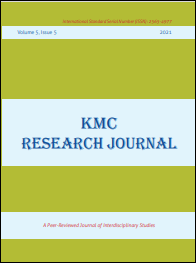Employee Recognition and Intention to Stay in Banking Sector in Nepal
DOI:
https://doi.org/10.3126/kmcrj.v5i5.53301Keywords:
Bank, Employees, Organization, Turnover, AppreciationAbstract
This research paper examines the relationship between extrinsic and intrinsic recognition and willingness to stay in an organization. The study is descriptive and correlational. The sample size for this research was 400, where the respondents were categorized according to gender, age group, highest education level, and job position. A questionnaire was used to maintain the diversity in information collection and come to an appropriate conclusion. The study found that most employees consider monetary reward the most important and training and development as the least important to stay at the bank. Similarly, employees seem to respond positively that they would like to continue their work in the organization if provided with attractive salaries and incentive packages from their current job. In the relationship between recognition and intention to stay, it was found that there is a positive relationship between recognition (extrinsic and intrinsic) and intention to stay. It is very important for the human resources department to understand whether or not their employees are happy with what they are receiving. It is high time the management should think that employees prefer to pay and promotion, and having these factors, an organization will be able to retain them. Hence, it can be concluded as the recognition system of the banks must be improved both ways: extrinsic and intrinsic recognition.
Downloads
Downloads
Published
How to Cite
Issue
Section
License
© Koteshwor Multiple Campus




